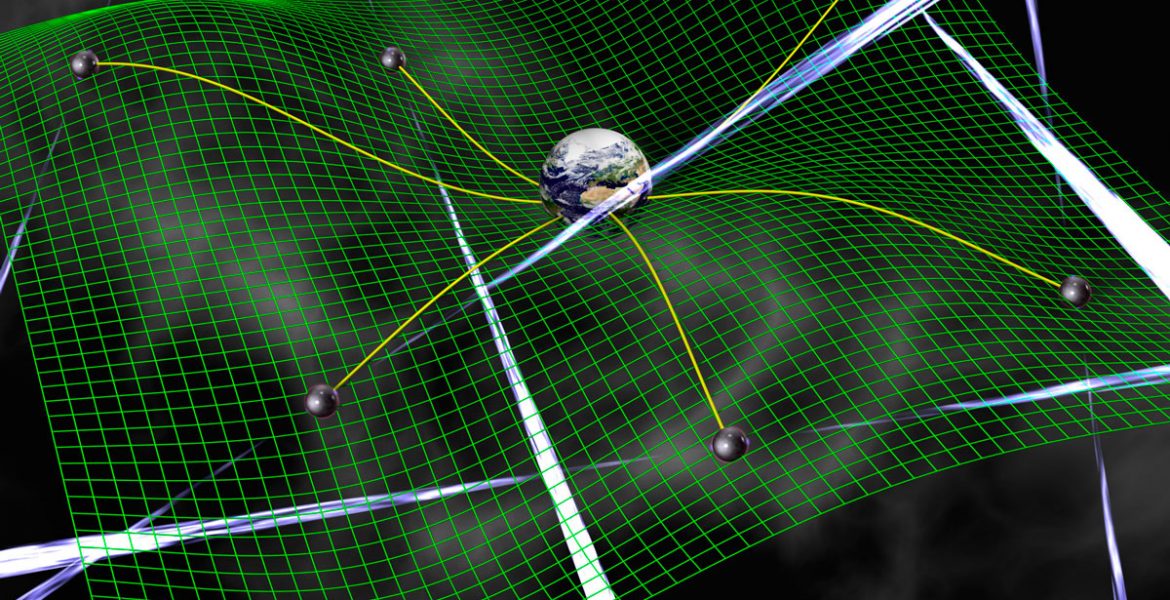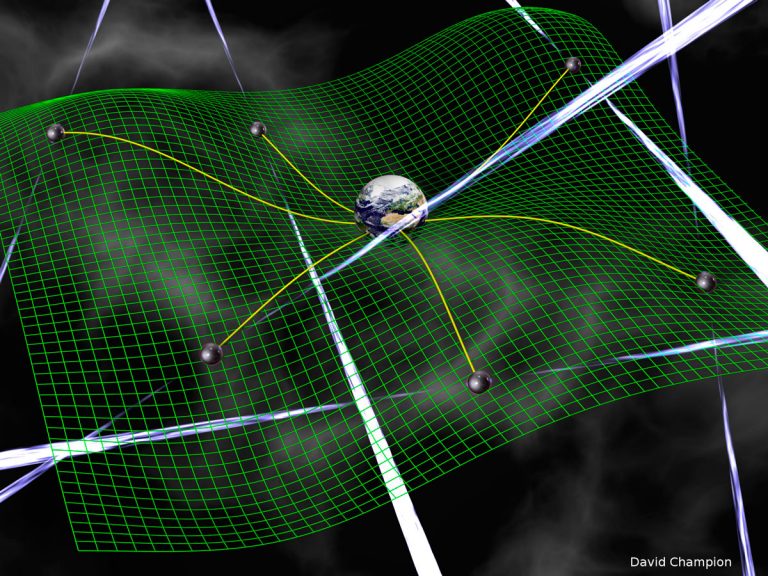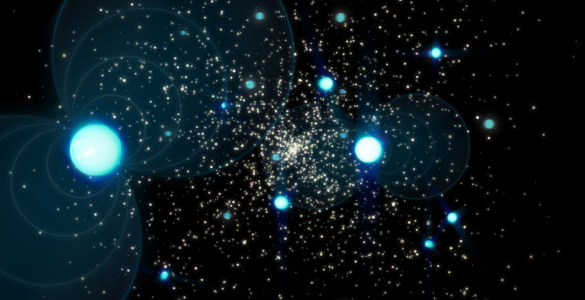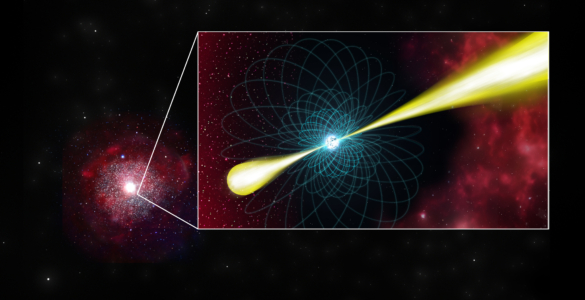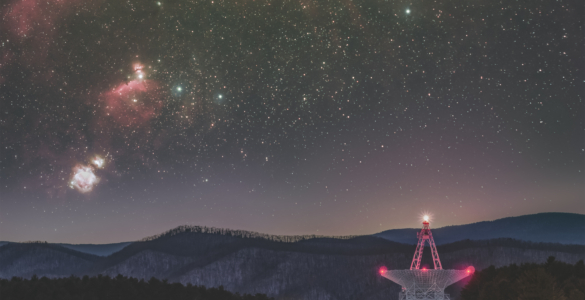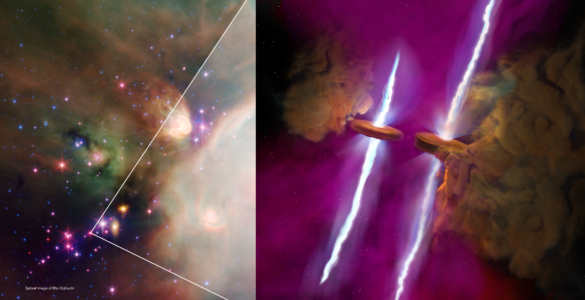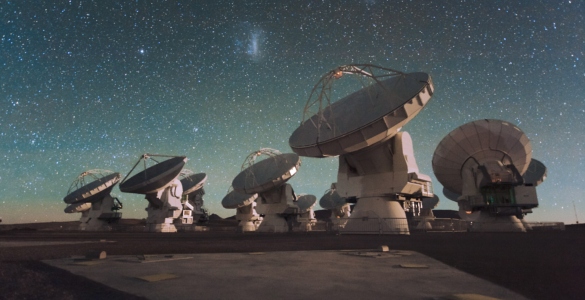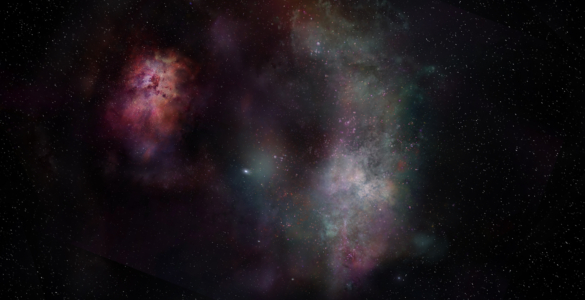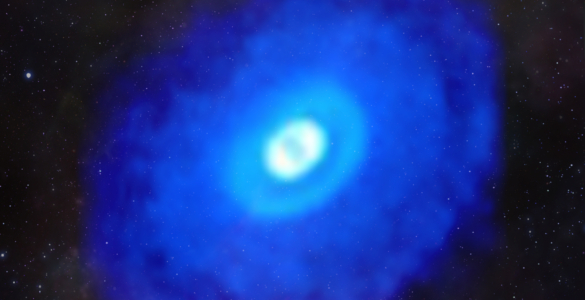The National Science Foundation (NSF) has awarded the North American Nanohertz Observatory for Gravitational Waves (NANOGrav) $14.5 million over 5 years to create and operate a Physics Frontiers Center (PFC).
The NANOGrav PFC will address a transformational challenge in astrophysics: the detection of low-frequency gravitational waves. Gravitational waves are elusive ripples in the fabric of space-time, which theories predict should arise from extremely energetic and large-scale cosmic events, such as orbiting pairs of massive black holes found at the centers of merging galaxies, phase transitions in the very early Universe, or as relics from cosmic inflation, the period just after the Big Bang when all of the Universe that we can see expanded rapidly from a minuscule volume in a tiny fraction of a second.
In Einstein’s theory of gravity, these events produce waves that distort, or ripple, the actual fabric of the cosmos as they propagate throughout space. These low-frequency waves have such a long wavelength — significantly larger than our Solar System — that we cannot build a detector large enough to observe them. Fortunately, the Universe itself has created its own detection tool, millisecond pulsars — the rapidly spinning, superdense remains of massive stars that have exploded as supernovas. These ultra-stable stars are nature’s most precise celestial clocks, appearing to “tick” every time their beamed emissions sweep past the Earth like a lighthouse beacon. Gravitational waves may be detected in the small but perceptible fluctuations — a few tens of nanoseconds over five or more years — they cause in the measured arrival times at Earth of radio pulses from these millisecond pulsars.
NANOGrav was founded in 2007 and at the time consisted of 17 members in the United States and Canada. It has since grown to 55 scientists and students at 15 institutions. The NANOGrav PFC will provide funding for 23 senior personnel, 6 postdoctoral researchers, 10 graduate students, and 25 undergraduate students distributed across 11 institutions.
Xavier Siemens, a physicist at the University of Wisconsin-Milwaukee, is the principal investigator for the project and will serve as director of the center. Maura McLaughlin, an astronomer at West Virginia University in Morgantown, will serve as co-director.
NSF currently supports nine other PFCs, which range in research areas from theoretical biological physics and the physics of living cells to quantum information and nuclear astrophysics. By bringing together astronomers and physicists from across the United States and Canada to search for the telltale signature of gravitational waves buried in the incredibly steady ticking of distant pulsars, NANOGrav is advancing the PFC mission to “foster research at the intellectual frontiers of physics” and to “enable transformational advances in the most promising research areas.”
“For pulsar astronomers to be able to detect these gravitational waves, we really need the best and most sensitive radio telescopes in the world,” said Scott Ransom, an astronomer with the National Radio Astronomy Observatory (NRAO) in Charlottesville, Va., and one of the founding members of NANOGrav. “In the United States, we have the two best — the Green Bank Telescope in West Virginia with its fantastic sky coverage and the Arecibo Observatory in Puerto Rico with its unmatched sensitivity. These instruments have given us a huge edge in this research.”
“NANOGrav is now poised to detect low-frequency gravitational waves,” said Siemens. “This center will ensure that researchers have the resources necessary to explore one of the most exciting frontiers in all of physics and astronomy.”
This research makes use of the unique capabilities and sensitivity of the Arecibo Observatory in Puerto Rico and NRAO’s Green Bank Telescope (GBT). The GBT is located in the National Radio Quiet Zone, which protects the incredibly sensitive telescope from unwanted radio interference, enabling it to study pulsars and other astronomical objects. Arecibo is the largest single dish radio telescope in the world today.
“NANOGrav is fortunate to have access to the two most sensitive telescopes in the world for this groundbreaking research,” McLaughlin stated. “Furthermore, as many of our observations are performed by students, the telescopes are serving a vital role in creating a pipeline for science and technology fields.”
The National Radio Astronomy Observatory is a facility of the National Science Foundation, operated under cooperative agreement by Associated Universities, Inc.
# # #
Contact: Charles Blue
NRAO Public Information Officer
(434) 296-0314; cblue@nrao.edu
The research performed by the PFC is distributed among the participating institutions and members of NANOGrav. The personnel funded by the NANOGrav PFC include:
California Institute of Technology
Curt Cutler
Joseph Lazio
Walid Majid
Michele Vallisneri
Cornell University
James Cordes
Rachel Bean
Adam Brazier
Shamibrata Chatterjee
Franklin and Marshall College
Andrea Lommen
Fronefield Crawford
Lafayette College
David Nice
Montana State University
Neil Cornish
Universities Space Research Association and NASA’s Goddard Space Flight Center
Zaven Arzoumanian
National Radio Astronomy Observatory
Paul Demorest
Scott Ransom
Oberlin College
Daniel Stinebring
University of Texas at Brownsville
Fredrick Jenet
Joseph Romano
University of Wisconsin–Milwaukee
David Kaplan
Xavier Siemens
West Virginia University
Duncan Lorimer
Maura McLaughlin
Sean McWilliams
They collaborate closely with Ingrid Stairs at the University of British Columbia in Vancouver, Canada, and Victoria Kaspi at McGill University in Montreal, Canada.


